A computer can be used in many ways, it can be used for schoolwork, office work, servers, and even gaming. Understanding how a computer works can be challenging for some because of the many different components that are needed to build a computer. Essentially there are about 6 components that make up a computer which are the Motherboard, Central Processing Unit (CPU), Random Access Memory (RAM), Types of storage, Power Supply, and the size of the computer case (Micro Atx, Atx, and E-Atx). Each component serves its own purpose, but they are crucial to one another because when they work together simultaneously it helps operate the whole computer. To make things simple, the four basic functions of a computer is to Input, Store, Process, and Output information.
The Motherboard:
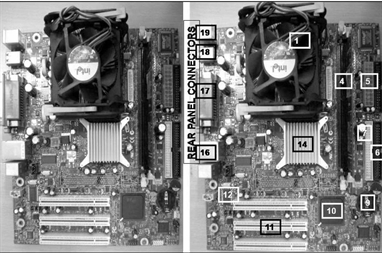
Once you open the case of a computer you will see that all the components are connected and attached to one place, the motherboard. As seen in Figure 1, which is the #2, the motherboard is viewed as the backbone and the foundation of a computer. Its most important function is to store and connect most of the components. This is where the CPU, CPU Cooler, Ram, Video Cards, Sound Cards, and all the cables from the Power Supply are connected. It also contains many different electrical pathways which are called Buses and they allow data and power to travel between the different components inside the computer. This is how each component receives their information on what to do when confronted with a task.
The Central Processing Unit (CPU):
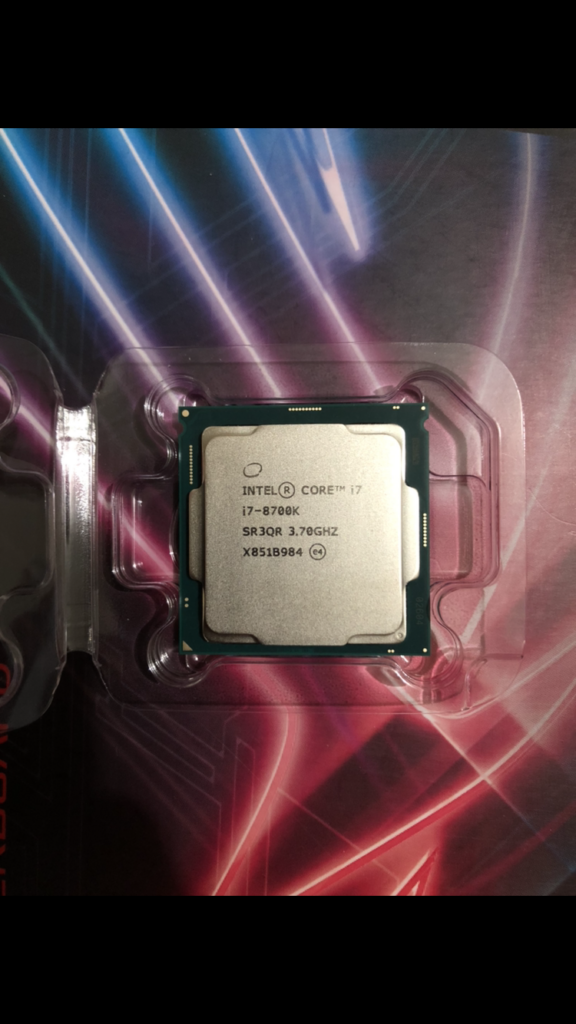
There are two companies who produce the most CPU’s on the market, Intel and AMD. In figure 2 you can see my own personal CPU which is an intel i7 8700K. A CPU is made from millions of transistors and its main function is to execute many programs efficiently and quickly. It can also be viewed as the brain of a computer because it’s responsible for sending out information and sets of instructions to every component to perform their function when told to do so. CPU speed is measured by the amount of cycles it can perform in a second and its driven by an internal clock, each clock pulse means the CPU has processed a set of instructions. The speed can be measured in both Megahertz (millions of cycles per second) and Gigahertz (billions of cycles per second). My CPU is clocked at 3.7Ghz but it can turbo clock to 4.7Ghz.
Random Access Memory (RAM):
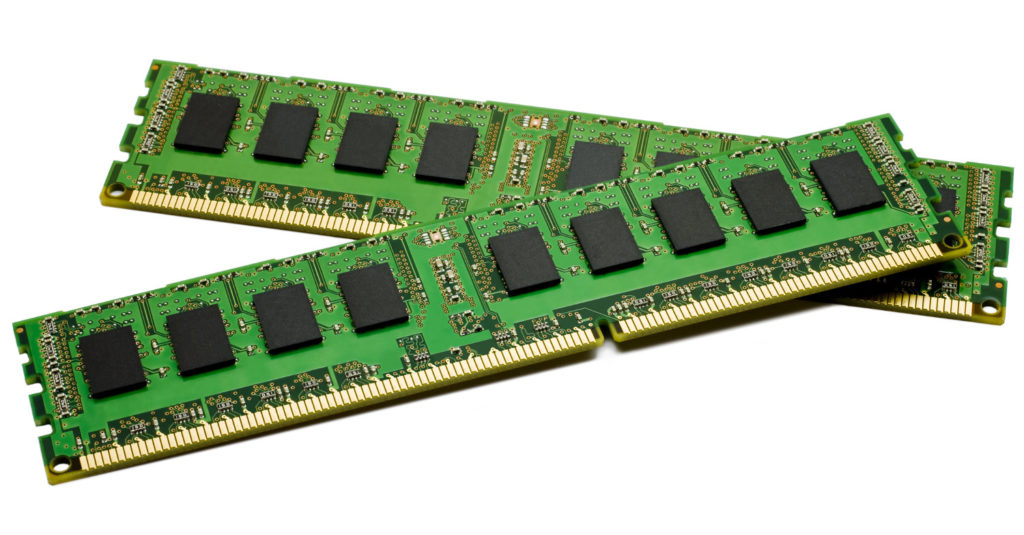
RAM is used to store information and data temporarily that can be accessed by the CPU to reduce the amount of stress when operating on full load. In figure 3 you can see 3 sticks of RAM. This type of memory is very different from storage memory such as a hard drive because once you turn of the computer, all the information stored on RAM is lost and erased. The best way to understand how RAM works is by running different programs at the same time or tabs in a web browser. Once your computer starts to slow down that’s how you know your RAM is at it’s peak. The more RAM you have the more programs the computer can handle without stressing the CPU.
Storage:
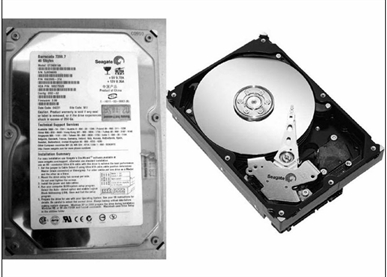
There are many different types of storage devices, but its main function is to store and access information in a safe and stable location. As seen in figure 4, that is a typical hard drive looks and used to store mass amount of data which can range from 500gigs- 8 Terabytes and up. The problem most people face is that hard drives are typically slow compared to SSD’S (Solid State Drives). SSD’s outperform HDD’s when it comes to accessing information that was stored and they boot faster as well. To power any drive you need a power and data cable which needs to be connected to the motherboard and the power supply.
Power Supply:
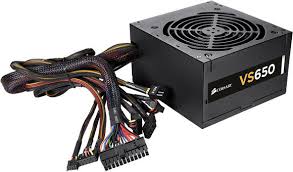
A Power Supply (or PSU) has one main function, to provide power to all the components in a computer. It takes in the amount of electricity needed to turn on the computer by turning AC current to DC current. Not all power supplies are created equal, they come in different amounts of watts, In figure 5 you can see that this is a 650-watt power supply. In addition, they all have different types of efficiencies, starting from 80 plus, 80 Plus Bronze, Silver, Gold, and the most efficient Platinum.
Computer Cases (Mini, Micro, Mid, and Full Tower):
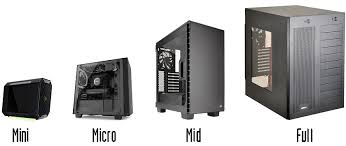
A computer case has one important function, to store all the components in a safe and secure place while providing ventilation and exhausting hot air. However, as seen in figure 6, there are 4 types of computer cases, Mini, Micro, Mid, and Full Tower. Each is designed for its specific purpose; Mini and Micro Towers are made for small and compact computers which can be mobile, Mid Towers are your typical computer cases, while Full towers are for higher end and powerful computers.
A computer is a very powerful and important machine that everyone uses every day, as it serves many important functions, from school work all the way to building servers. Understanding all the hardware that’s involved in a computer is very important because technology just keeps on advancing. When focusing on Computer Engineering it’s mostly involved with hardware and what better way to get started on learning the basics of how a computer by learning about the hardware. These are the essential components that are used in a variety of things such as phones and robots. After reviewing the six essential components in a computer, I hope this has provided a basic understanding of how computers operate and all the functions that occur inside a computer. Each component may have different roles but when paired together working simultaneously it can construct one of the most powerful machines.
Work Cited
- Chiappetta, M. (2013, February 04). How to pick the best PC power supply [Digital image]. Retrieved April 29, 2018, from https://www.pcworld.com/article/2025425/how-to-pick-the-best-pc-power-supply.html
- Indrajit, I. K., & Alam, A. (2010). Computer hardware for radiologists: Part I. Indian Journal of Radiology & Imaging, 20(3), 162–167. https://doi-org.ccny-proxy1.libr.ccny.cuny.edu/10.4103/0971-3026.69346
- Indrajit, I. K., & Alam, A. (2010). Computer hardware for radiologists: Part 2. Indian Journal of Radiology & Imaging, 20(4), 240–244. https://doi-org.ccny-proxy1.libr.ccny.cuny.edu/10.4103/0971-3026.73527
- J. (2017, October 18). What case will you be using in your next build? [Digital image]. Retrieved April 29, 2019, from https://forums.tomshardware.com/threads/what-case-size-will-you-be-using-in-your-next-build.3150190/

